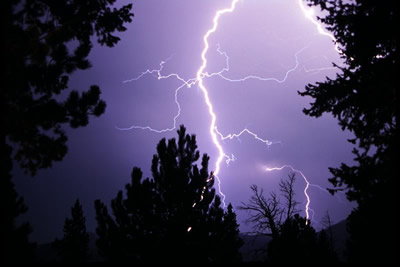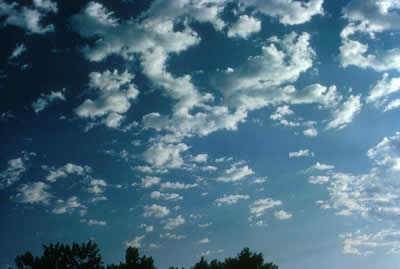Changing Planet: Survival of Trees
Trees contain some of nature's most accurate evidence of the past. Their growth layers, appearing as rings in the cross section of the tree trunk, record evidence of floods, droughts, insect attacks, lightning strikes, earthquakes and even changes of carbon dioxide levels that occurred during the lifespan of the tree. Subtle changes in the thickness of the rings over time indicate changes in length of, or water availability during, the growing season.
Analyzing growth periods from the past lends insight into how carbon dioxide levels and climate might have affected tree populations. Testing trees on a genomic level furthers understanding of tree evolution and their reactions to the variables of carbon dioxide level and temperature. Finally, laboratory testing of plants and trees in controlled climate conditions rounds out the picture of how these valuable, living resources will fare in a future that includes a warming climate.
Click on the video at the left to watch the NBC Learn video - Changing Planet: Survival of Trees.
Lesson plan: Changing Planet: Survival of Trees
You might also be interested in:

Lightning is the most spectacular element of a thunderstorm. In fact it is how thunderstorms got their name. Wait a minute, what does thunder have to do with lightning? Well, lightning causes thunder.
...more
Anyone who has ever cut down a tree is familiar with the rings radiating out from the center of a tree trunk marking the tree's age. Careful study of tree rings can offer much more: a rich record of history
...more
Though not the largest kingdom, with a mere 300,000 species catalogued, many might argue that the Kingdom Plantae just may be the most important group of living organisms. In the process known as "photosynthesis",
...more
The temperate forest biome is found in regions where there is large difference in temperature between winter and summer. Regions with this climate are generally found in the mid-latitudes, far from both
...more
Carbon dioxide is a colorless and non-flammable gas at normal temperature and pressure. Although much less abundant than nitrogen and oxygen in Earth's atmosphere, carbon dioxide is an important constituent
...more
Many educators are now finding opportunities to teach about Earth's climate and climate change in their classrooms. Windows to the Universe provides an interlinked learning ecosystem to a wealth of resources
...more
Altocumulus clouds (weather symbol - Ac), are made primarily of liquid water and have a thickness of 1 km. They are part of the Middle Cloud group (2000-7000m up). They are grayish-white with one part
...more














